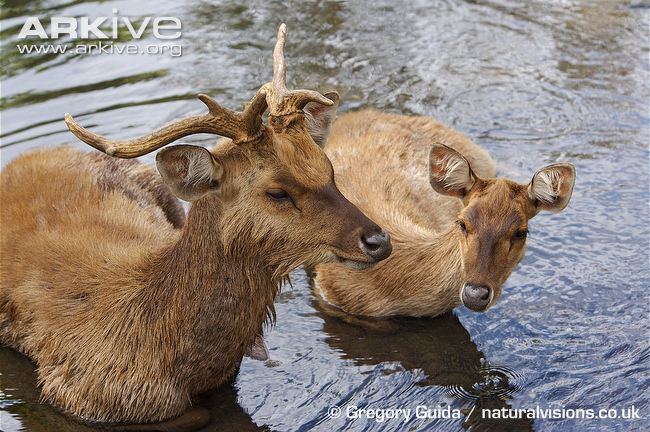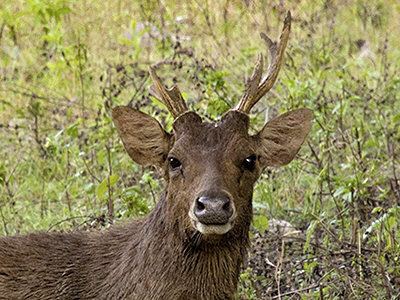Order Artiodactyla Rank Species | Phylum Chordata Family Cervidae Genus Rusa Higher classification Rusa | |
 | ||
Similar Deer, Sambar deer, Bawean deer, Indian muntjac, Mammal | ||
Deer timor javan rusa timor wild life animal planet hd
The Javan rusa or Sunda sambar (Rusa timorensis) is a deer native to the islands of Java, Bali and Timor (shared with East Timor) in Indonesia. It is also an introduced species in Irian Jaya, Borneo (Kalimantan), the Lesser Sunda Islands, Maluku, Sulawesi, Pohnpei, Fiji, Tonga, Samoa, Vanuatu, Solomon Islands, Christmas Islands, Cocos Islands, Nauru, Australia, New Caledonia, New Zealand, Papua New Guinea, New Britain and New Ireland.
Contents
- Deer timor javan rusa timor wild life animal planet hd
- Javan rusa
- Habitat
- Description
- Behavior
- Reproduction
- Subspecies
- References

Javan rusa
Habitat

It occupies a habitat similar to that of the Chital of India: open dry and mixed deciduous forests, parklands, and savannas. It is a close relative of the larger sambar deer. It is moderately hunted in eastern Australasia.

Rusa deer have established populations in remote islands, probably brought there by Indonesian fishermen. They adapt well, living as comfortably in the dry Australian bush as they do in their tropical homelands. This trait is shown well in the more frequent encounters on the fringes of Wollongong and Sydney, and in particular in the Royal National Park, indicating steadily growing numbers and strong herds.
Description

Rusa deer are recognised by their large ears, the light tufts of hair above the eyebrows, the antlers appearing too large for their body size.
Behavior
Rusa deer are active mostly in the early morning and late afternoon. They are rarely seen in the open and are very difficult to approach due to their keen senses and cautious instincts.
When alarmed, a rusa stag lets out an extremely loud honk. This is an alarm call and will alert any other deer in the vicinity.
Rusa deer are very sociable and seldom found alone; even if one seems to be alone it probably is not. These animals are so well camouflaged they may sometimes let a person walk right past them.
Reproduction
Javan rusa breed around July and August in a period known as the rut. At this time stags battle for dominance and breeding rights, contesting them by calling in a loud shrill bark and physical contact with the antlers. Calves are born at the start of spring. Maturity is attained in three to five years, depending on conditions and habitat.
Subspecies
Seven subspecies of Rusa timorensis are recognised:
